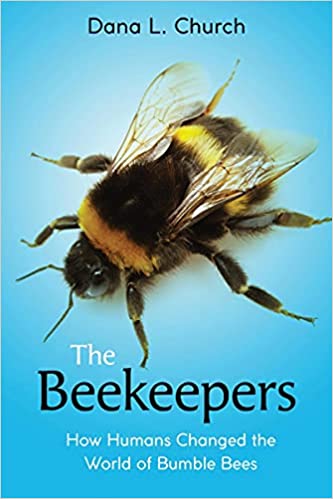The Beekeepers: How Humans Changed the World of Bumble Bees
Genre: nonfiction
anagan/dp/1927917409/ref=sr_1_1?dchild=1&keywords=degrees+of+barley+lick&qid=1622417483&s=books&sr=1-1">

Author: Dana L. Church
Publisher: Scholastic Focus
Dive deep into the world of this everyday insect -- and the science behind its uncertain future. Bumble bees are as familiar to most of us as the flowers these fuzzy insects feed upon. But did you know that the bees in your garden could be escapees from a local greenhouse, or descended from stowaways on a Viking ship?
Bumble bees are a vital part of our lives and Earth’s ecosystems, so much so that we’ve commercialized their breeding and shipped them across states, countries and ecosystems for our benefit. However, all of that human interference has consequences. Bumble bees are pushing out native species and altering ecosystems worldwide. Pesticide use has led to the spread of disease in local colonies. And some species may be disappearing entirely.
left no-repeat;left top;; autoWho knew that to study bees, Charles Darwin stationed all six of his children at intervals along a ditch, and had them sprinkle flour on the occasional bee passing by so that each could shout out the progress and whereabouts of the floured bee in question.
And who knew that in the early 1600s, a queen bee hibernating in a hay bale inadvertently caught a months-long ride on a Viking ship, only to awaken and proceed to populate Iceland, the first of her species to do so? It was a ploy used deliberately for centuries afterward, including on journeys from Great Britain to New Zealand: A reward was offered to anyone who could dig up a plump, hibernating queen bumble bee. The [UK ship] crew collected over two hundred queens!
And finally, who knew that the Iroquois learned each community of bees’ own humming songs? The Beekeepers is full of fascinating, educational, fun facts, and much of the book is written in story narrative to keep it entertaining.
On a beautiful summer morning in 2009 at the University of Stirling in Scotland, the grass glittered with dew and the sun was slowly warming the start to the day. A volunteer search committee stood in a field on the campus grounds, listening to their leader recite instructions. Standing by the leader’s side, with a dewy-wet belly and paws, was Toby, a springer spaniel sniffer dog. He was panting, eager to start the search… [The leader] leaned down; commanded, “Find it”; and unclipped the leash from Toby’s collar. Nose to the ground, scuttling into the woods this way and that, the dog searched for bumble bee nests.
The vocabulary is ideal for teens curious about bees, although the author uses way too many exclamation points, perhaps in the odd belief this will keep adolescents enthused. The book could have benefitted from sidebars to break it up and hold interest, but that’s a minor quibble.
It is sprinkled with photos, graphs and illustrations, just enough to keep it interesting -- certainly not coffee-table-book slick or illustrated-encyclopedia-boring. There’s a helpful glossary at the end, and a ton of references. The author studied bumble bees for her PhD, but appears to know how to write for kids.
Perhaps most interesting, this book is part of a new line of narrative nonfiction books (heavy research told in an entertaining style, sometimes novel-like). It’s worth looking at the line’s website if you’re a nonfiction lover, or know someone who is.
Yes, YAdudebooks reviews nonfiction in addition to fiction. No, we have not yet succeeded in getting a stream of nonfiction books coming our way to review. But we’re working on it and you’ll see more in the coming weeks and months. We invite authors and publishers of YA nonfiction to take note.
-P.W.

